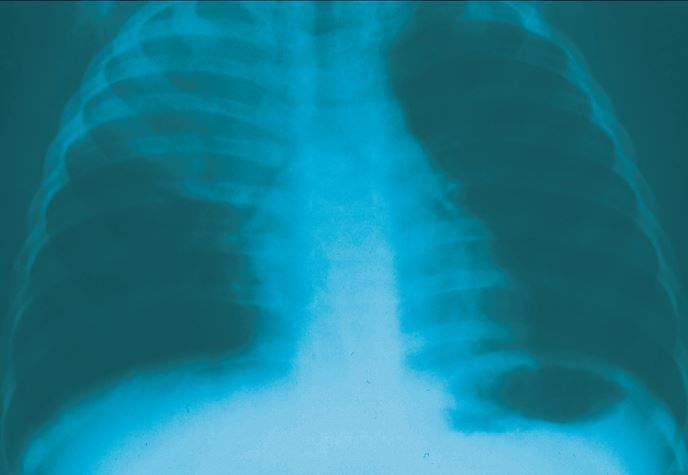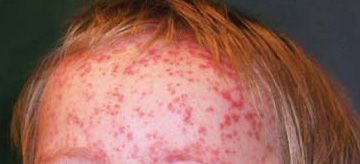Take the “Breath Test”-A Pediatric Respiratory Photo Quiz
Respiratory symptoms are a major reason why outpatients seek medical care, and primary care physicians who treat children frequently see pneumonia. This week’s photo essay tests your knowledge of respiratory problems in kids.
Question 1:
Right upper lobe consolidation is evident in this chest x-ray film from a 2-year-old girl who had an abrupt onset of fever, chills, productive cough, and abdominal pain. Based on her workup and response to therapy, the diagnosis was streptococcal pneumonia.

For the discussion, click here.
Click here for the next question.
For the answers, click here.
Question 2:
A 6-month-old boy presented with a dry cough and intermittent wheezing. The chest radiograph, slightly rotated as evidenced by the clavicles, shows a normal heart contour with an upper border merging with thymic tissue, a right middle lobe infiltrate, and peribronchial cuffing. The diagnosis was reactive airway disease. Clinicians must recognize the initial symptoms and eliminate other causes before making a diagnosis of asthma, which should be differentiated from disorders that may not respond well to asthma therapy.

For the discussion, click here.
Click here for the next question.
For the answers, click here.
Question 3:
A 14-month-old girl presented with persistent fever, cough, and worsening maculopapular rash on the forehead, cheeks, neck, chest, back, and arms. Gingival mucosa showed some hyperemia of the posterior palate, no enanthem; tonsils red and inflamed, with no white plaques. Serologic testing revealed an elevated level of IgM antibody to viral capsid antigen.

For the discussion, click here.
Click here for the next question.
For the answers, click here.
Question 4:

For the discussion, click here.
Click here for the next question.
For the answers, click here.
Question 5:
A 2-month-old infant, born at 26 weeks’ gestation, had right submandibular swelling with inflammation and induration extending up to the nape of the neck. Ultrasonography of the neck showed multiple enlarged lymph nodes with soft tissue swelling. He had cellulitis-adenitis syndrome from late-onset group B streptococcus (GBS) infection.

For the discussion, click here.
For the answers, click here.
ANSWER KEY:
Question 1. Answer: d
Question 2. Answer: d
Question 3. Answer: a
Question 4. Answer: e
Question 5. Answer: a